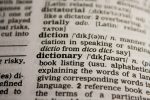Themes and Characterization in the Recommended Prose Text – JSS 2 Second Term Literature Lesson
Literature in English JSS 2 Second Term Lesson Notes – Week 2
Subject: Literature in English
Class: JSS 2
Term: Second Term
Week: 2
Age: 11 – 13 years
Topic: Themes and Characterization in the Recommended Prose Text
Sub-topic: Identifying Themes and Analyzing Characters in the Recommended Prose Text
Duration: 40 minutes
Behavioral Objectives
By the end of the lesson, students should be able to:
- Define themes and characterization in literature.
- Identify the major themes in the recommended prose text.
- Analyze the main characters in the recommended prose text.
- Explain how themes and characters contribute to the development of the story.
Keywords
- Theme
- Characterization
- Protagonist
- Antagonist
- Minor Characters
- Conflict
- Moral Lessons
Set Induction
The teacher will begin the lesson by asking students about their favorite storybooks or novels and what they learned from them. The teacher will then introduce the concepts of themes and characterization.
Entry Behavior
Students have already read and discussed the plot of the recommended prose text in previous lessons.
Learning Resources and Materials
- Copies of the recommended prose text
- Whiteboard and markers
- Character role charts
- Video clips or pictures of literary characters (if available)
Building Background/Connection to Prior Knowledge
Students are familiar with different types of stories from previous literature lessons and personal reading experiences.
Embedded Core Skills
- Critical thinking
- Communication
- Analysis
- Interpretation
Learning Materials
- Lagos State Scheme of Work
- Approved JSS 2 Literature in English Textbooks
Reference Books
- Lagos State Scheme of Work for JSS 2
- The recommended prose text for JSS 2
- Online resources on literary analysis
Lesson Presentation
Step 1: Definition of Themes and Characterization
Teacher’s Activities:
- The teacher defines themes as the central ideas or messages in a literary work.
- The teacher defines characterization as the way an author presents and develops characters in a story.
Learners’ Activities:
- Students take notes and provide examples of themes from stories they have read.
- Students describe their favorite fictional characters and how they were portrayed.
Step 2: Identifying Themes in the Recommended Prose Text
Teacher’s Activities:
The teacher explains that themes are often developed through:
- The actions of characters
- Conflicts and resolutions
- Dialogue and interactions
- The moral lessons of the story
Common themes in literature include:
- Love and friendship (e.g., how two characters care for each other)
- Bravery and courage (e.g., facing challenges)
- Betrayal and revenge (e.g., a friend turning against another)
- Poverty and social class (e.g., struggles of poor families)
- Justice and fairness (e.g., punishing wrongdoing)
The teacher guides students in identifying the major themes in the recommended prose text.
Learners’ Activities:
- Students identify and discuss themes from the recommended text.
- Students relate the themes to real-life experiences.
Step 3: Analyzing Characters in the Recommended Prose Text
Teacher’s Activities:
The teacher explains the types of characters in a prose text:
- Protagonist: The main character, often the hero.
- Antagonist: The character who opposes the protagonist.
- Minor characters: Supporting characters who help develop the story.
The teacher then guides students in analyzing the main characters in the recommended prose text:
- Character traits (e.g., kind, brave, selfish, wicked)
- Character roles (e.g., hero, villain, helper)
- Character growth (e.g., changes the character undergoes)
Learners’ Activities:
- Students identify the protagonist and antagonist in the story.
- Students describe the personality and actions of key characters.
- Students explain how certain characters influence the story’s outcome.
Step 4: Relationship Between Themes and Characterization
Teacher’s Activities:
- The teacher explains how a character’s actions and decisions contribute to the themes of the story.
- The teacher provides examples from the recommended text where a character’s choices highlight a major theme.
Learners’ Activities:
- Students analyze how a character’s behavior reflects a theme in the story.
- Students explain how the story’s moral lesson is connected to the characters’ actions.
Evaluation Questions
-
What is a theme in literature?
a) A type of poem
b) The central idea in a story
c) A character’s name
d) The title of a book -
Which of the following is NOT an example of a theme?
a) Friendship
b) Betrayal
c) A character’s name
d) Justice -
Who is the protagonist in a story?
a) The main character
b) The villain
c) A minor character
d) The narrator -
Which character usually opposes the protagonist?
a) Hero
b) Friend
c) Antagonist
d) Neighbor -
What is characterization?
a) The way an author develops characters
b) The number of chapters in a book
c) The theme of a story
d) The location of a story -
A character who supports the main character is called ____.
a) The antagonist
b) A minor character
c) The protagonist
d) The narrator -
Which of these best describes a moral lesson?
a) A chapter title
b) What we learn from a story
c) The author’s name
d) The setting of the story -
In literature, a character’s growth refers to ____.
a) Their age
b) How they change in the story
c) The number of pages in a book
d) Their job -
Which of these can influence a story’s theme?
a) The writer’s name
b) The characters’ actions
c) The number of characters
d) The size of the book -
If a character in a story is always honest and helps others, they can be described as ____.
a) Selfish
b) Brave
c) Kind and trustworthy
d) Lazy
Class Activity Discussion (FAQs and Answers)
-
What is the difference between a theme and a moral lesson?
A theme is a central idea, while a moral lesson is what the reader learns from the story. -
Can a story have more than one theme?
Yes, many stories have multiple themes. -
How do authors show characterization?
Through a character’s actions, speech, and interactions with others. -
Why is the protagonist important?
The protagonist drives the story and often learns an important lesson. -
Do antagonists always have to be evil?
No, some antagonists simply have opposing goals to the protagonist.
Assessment (Short Answer Questions)
- Define the term “theme.”
- Mention three major themes in the recommended prose text.
- Who is the protagonist in the recommended prose text?
- List two minor characters in the recommended prose text.
- How does the antagonist influence the story?
Conclusion
The teacher summarizes the lesson and assigns students to write a short paragraph analyzing their favorite character from the recommended prose text.
Related
Related posts:
- Themes and Plot in the Recommended Drama Text – JSS 2 Second Term Literature Lesson
- Language, Setting, and Characterization in Drama – JSS 2 Second Term Literature Lesson
- Identifying Figures of Speech in Prose | JSS 2 Literature Lesson
- Revision Test Literature JSS 2 Second Term Lesson Notes
- Examination Questions Literature JSS 2 Second Term Lesson Notes
Related Posts

BEVERAGES
JSS 2 SECOND TERM MATHEMATICS REVISION

Composition: Writing a Report – An Accident I Witnessed (JSS 2)
About The Author
Edu Delight Tutors
Am a dedicated educator with a passion for learning and a keen interest in technology. I believe that technology can revolutionize education and am committed to creating an online hub of knowledge, inspiration, and growth for both educators and students. Welcome to Edu Delight Tutors, where learning knows no boundaries.